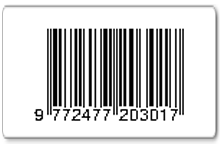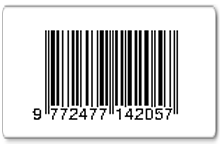Dynamic and Static Modeling Embedded in Inquiry Learning to Improve Student’s Multiple Representation Ability
Abstract
Integration of dynamic and static modeling on guided inquiry learning can help students to understand chemical concepts at macroscopic, symbolic and microscopic levels. This research aimed to examine and to explain the differences of students’ multiple representation ability that was taught by guided inquiry with dynamic and static modeling in redox reaction concept. This research used descriptive and quasi-experimental design. Data were analyzed using descriptive and manova statistics analysis. The results showed that the ability of students’ macroscopic level that was taught by guided inquiry with dynamic and static modeling is the same. While the student’s symbolic and microscopic level ability that was taught by guided inquiry with dynamic modeling higher than student’s ability that was taught by guided inquiry with static modeling. The implication of this research is chemistry learning with dynamic modeling can help students to construct chemical concept more easily and gain the complete understanding.
Keywords
Full Text:
PDFReferences
Antonoglou, LD, Charistos ND, & Sigalas, MP 2006, ‘Design of Molecular Visualization Educational Software for Chemistry Learning’, Leading Edge Educational Technology, Chapter 4, pp. 55-81.
Ardac, D. and Akaygun, S 2004, ‘Effectiveness of Multimedia-Based Instruction That Emphasizes Molecular Representations on Students’ Understanding of Chemical Change’, Journal of Research in Science Teaching, vol. 41, no.4, pp. 317-37.
Blanchard, MR., Southerland, SA, Osborne JW, Sampson VD, Annetta LA., & Granger, EM 2010, ‘Is Inquiry Possible In Light Of Accountability?: A Quantitative Comparison Of The Relative Effectiveness Of Guided Inquiry And Verification Laboratory Instruction’, Science Education, vol. 94, pp. 577 – 616.
Chandrasegaran, AL, Treagust, DF & Mocerino, M 2007, ’The Development of two-tier multiple-choice diagnostic instrumen for evaluating secondary school students’ ability to describe and explain chemical reactions using multiple levels of representation’, Chemistry Education Research and Practise, vol. 8, no.3, pp.293-307.
Chang, H-Y & Linn MC 2013, ‘Scaffolding Learning From Molecular Visualizations’, Journal of Research in Science Teaching, vol.50, no.7, pp. 858-86.
Dori, YJ & Kaberman, Z 2012, ‘Assessing high school chemistry students’ modeling sub-skills in a computerized’, Instructional Science, vol. 40, no.1, pp. 69-91.
Hake, RR 1998, ‘Interactive-engagement vs traditional methods: A Six-thousand-student survey of mechanics test data for introductory physics courses’, American Journal of Physics, vol. 66, pp. 64-74.
Hanson, DM 2005, Designing Process-Oriented Guided-Inquiry Activities. In SW. Bayerlein & DK. Apple (Eds). Pacific Crest, New York.
Hilton, A & Nichols, K 2011, ‘Representational Classroom Practices that Contribute to Students' Conceptual and Representational Understanding of Chemical Bonding’, International Journal of Science Education, vol. 33, no.16, pp. 2215-46.
Kelly, RM., Phelps AJ, & Sanger MJ 2004, ‘The effects of a Computer Animation on Students’ Conceptual Understanding of a Can-Crusing demonstration at the Macroskopic, Microskopic, dan symbolic levels’, The Chemical Educator, vol. 9, no.3, pp. 184-8
Langitasari, I 2016, Analisis Kemampuan Awal Multi Level Representasi Mahasiswa Tingkat I Pada Konsep Reaksi Redoks," Edu Chemia (Jurnal Kimia dan Pendidikan), vol. 1, no. 1, pp. 14-24.
Levy, D 2013, ‘How Dynamic Visualization Technology can Support Molecular Reasoning’ Journal of Science Education and Technology, vol. 22, no. 5,pp. 702-17.
Liu, H-C, Andre T, & Greenbowe T 2008, ‘The Impact of Learner’s Prior Knowledge on Their Use of Chemistry Computer Simulation: A Case Study’, Journal of Science and Educational Technology, vol. 17, pp. 466-82.
Rosenthal, D.P., & M.J. Sanger 2012, Student misinterpretations and misconceptions based on their explanations of two computer animations of varying complexity depicting the same oxidation–reduction reaction. Chemistry Education Research and Practice, vol. 13, pp. 471-83.
Sanger, MJ & Greenbowe, TJ 1997, ‘Students’ misconceptions in electrochemistry: current flow in electrolyte solutions and the salt bridge’, Journal of Chemical Education, vol. 74, no. 7,pp. 819–23.
Smetana, LK & Bell, RL 2012, ‘Computer Simulation to Support Science Instruction and Learning: A Critical Review of the Literature’, International Journal of Science Education, vol. 34, no.9,pp. 1337-70.
Stieff, M 2011, ‘Improving Representational Copetence using Molecular Simulations Embedded in Inquiry Activities’, Journal of Research in Science Teaching, vol. 48, no. 10, pp. 1137-58.
Tasker, R. & Dalton, R 2006, ‘Research Into Practise: Visualisation of the Molecular World Using Animations’, Chemistry Education Research and Practise, vol.7, no.2, pp. 141-59.
Tuan, H-L, Chin, C-C, Tsai, C-C, & Cheng, S-F 2005, ‘Investigating The Effectiveness Of Inquiry Instruction On The Motivation Of Different Learning Styles Students’, International Journal of Science and Mathematics Education, vol. 3,pp. 541–66.
Tuysuz, M., Ekiz, B, Bektas, O, Uzuntiryaki, E, Tarkin, A, & Kutucu, ES 2011, ‘Pre-service Chemistry Teachers’ Understanding of Phase Changes and Dissolution at Macroscopic, Symbolic, and Microskopic Levels’, Procedia Social and Behavioral Sciences, vol. 15, pp. 152-455.
Utari, D, Fadiawato, N & Tania, L 2017, ‘Kemampuan Representasi Siswa pada Materi Kesetimbangan Kimia Menggunakan Animasi Berbasis Representasi Kimia’. Jurnal Pendidikan dan Pembelajaran Kimia. vol.6, no.3, pp. 414-26.
Wu, H-K., Krajcik, JS, & Soloway, E 2001, ‘Promoting Understanding of Chemical Representation: Students’ Use a Visualization Tool in the Classroom’, Journal of Research in Science Teaching, vol. 38, no. 7, pp. 821-42.
Yarden, H & Yarden 2009, ‘Learning Using Dynamic and Static Visualization: Students’ Comprehension, Prior Knowledge and Conceptual Status of a Biotechnologica’, Research In Science Education, vol. 40, no.3, pp. 375-402.
Yousefzadeh, MJ, Martin, EM, & Rogers, AL 2007, ‘A Guided-Inquiry Approach To the General Chemistry Laboratory’, Chemical education, vol. 12, no. 6, pp. 396-8
Zhang, ZH & Linn, MC 2011, ‘Can Generating Representations Enhance Learning With Dynamic Visualizations?’, Journal of Research In Science Teaching, vol. 48, no. 10, pp. 1177–98
DOI: http://dx.doi.org/10.30870/jppi.v4i1.2881
Refbacks
- There are currently no refbacks.
Copyright (c) 2018 Jurnal Penelitian dan Pembelajaran IPA

This work is licensed under a Creative Commons Attribution 4.0 International License.
Jurnal Penelitian dan Pembelajaran IPA is licensed under a Creative Commons Attribution 4.0 International License
Copyright © 2023 Jurnal Penelitian dan Pembelajaran IPA. All rights reserved.






